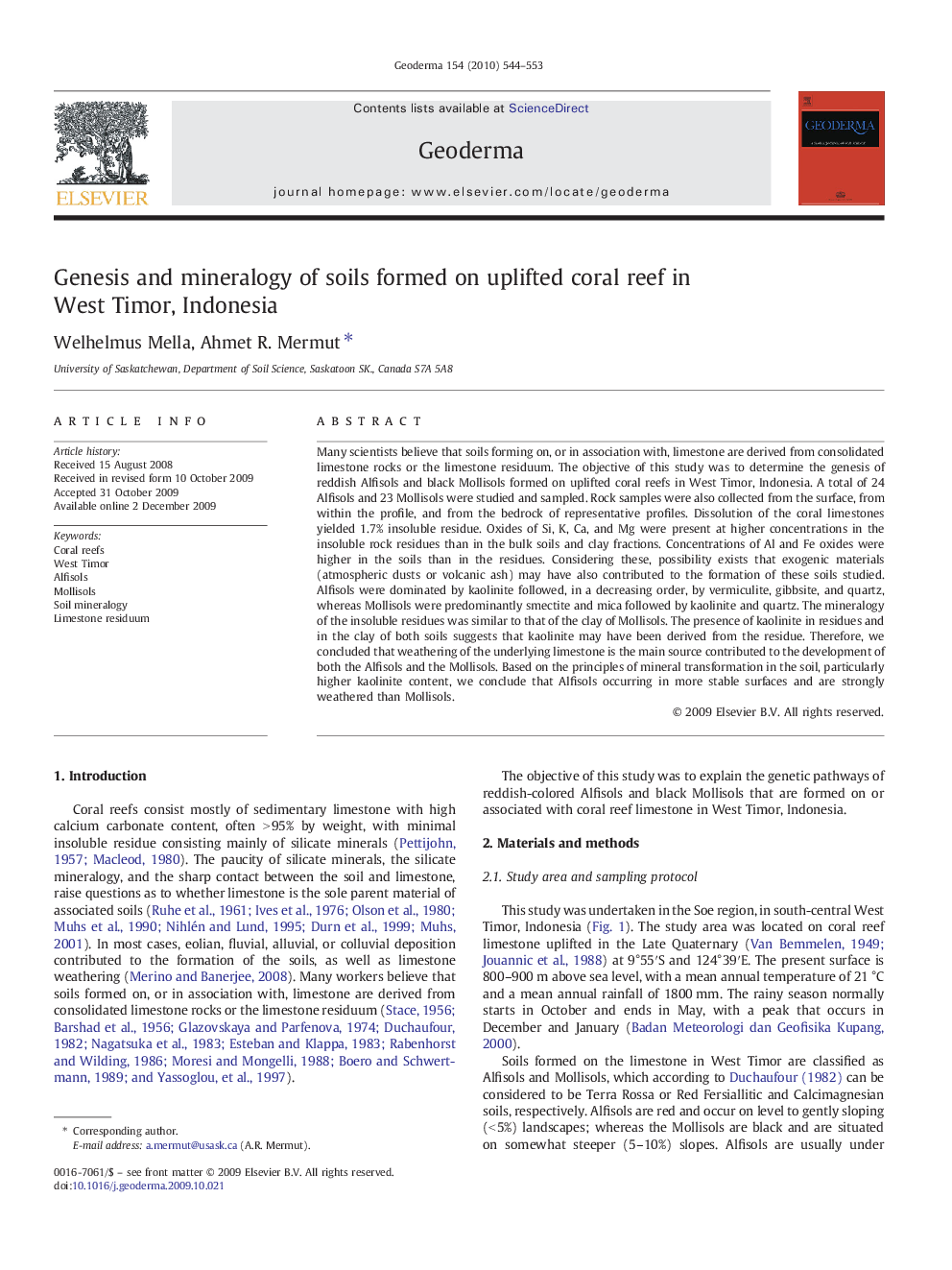| Article ID | Journal | Published Year | Pages | File Type |
|---|---|---|---|---|
| 4575025 | Geoderma | 2010 | 10 Pages |
Many scientists believe that soils forming on, or in association with, limestone are derived from consolidated limestone rocks or the limestone residuum. The objective of this study was to determine the genesis of reddish Alfisols and black Mollisols formed on uplifted coral reefs in West Timor, Indonesia. A total of 24 Alfisols and 23 Mollisols were studied and sampled. Rock samples were also collected from the surface, from within the profile, and from the bedrock of representative profiles. Dissolution of the coral limestones yielded 1.7% insoluble residue. Oxides of Si, K, Ca, and Mg were present at higher concentrations in the insoluble rock residues than in the bulk soils and clay fractions. Concentrations of Al and Fe oxides were higher in the soils than in the residues. Considering these, possibility exists that exogenic materials (atmospheric dusts or volcanic ash) may have also contributed to the formation of these soils studied. Alfisols were dominated by kaolinite followed, in a decreasing order, by vermiculite, gibbsite, and quartz, whereas Mollisols were predominantly smectite and mica followed by kaolinite and quartz. The mineralogy of the insoluble residues was similar to that of the clay of Mollisols. The presence of kaolinite in residues and in the clay of both soils suggests that kaolinite may have been derived from the residue. Therefore, we concluded that weathering of the underlying limestone is the main source contributed to the development of both the Alfisols and the Mollisols. Based on the principles of mineral transformation in the soil, particularly higher kaolinite content, we conclude that Alfisols occurring in more stable surfaces and are strongly weathered than Mollisols.
